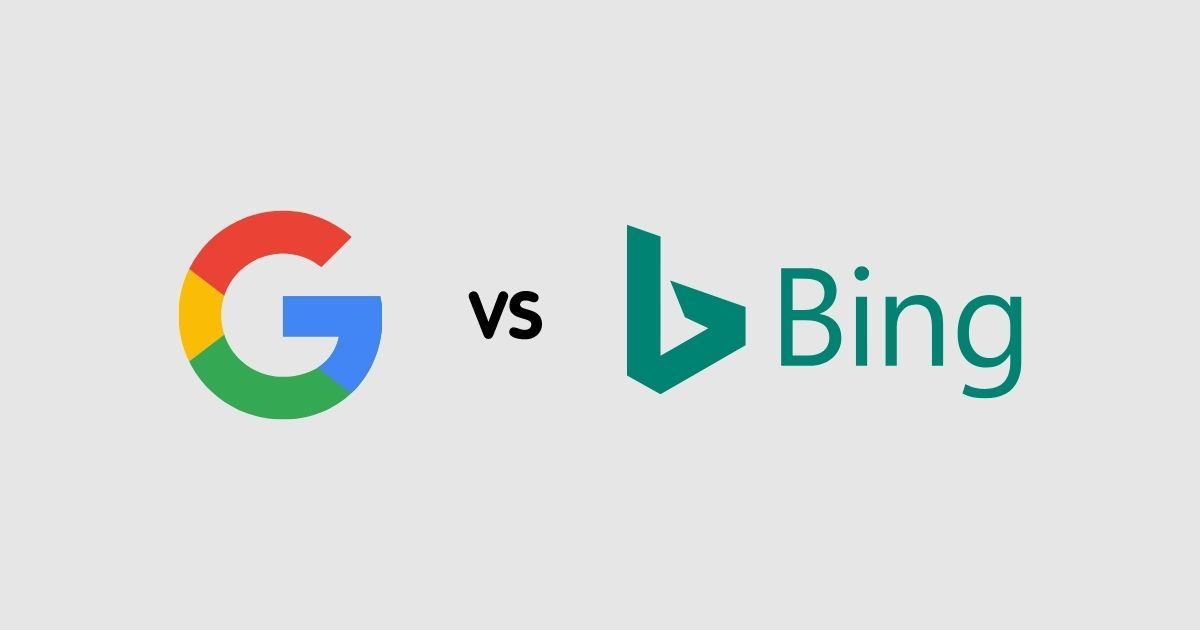
In the evolving landscape of AI chatbots, Bing Chat and Google Bard stand as towering figures, revolutionizing how we interact with the internet. As AI tools become increasingly sophisticated, these two giants are at the forefront, but which one is superior?
This article delves into Bing Chat vs. Google Bard, comparing their capabilities and exploring the nuances of their technology.
What is Bing Chat?
Bing Chat, a product of Microsoft, leverages large language models to provide users with information, answers, and entertainment. Integrated with the Edge browser and Bing search engine, Bing Chat offers a seamless experience for those seeking to process data quickly.
It’s more than just a search tool; it’s a conversation partner that can understand and respond to various queries.
Key Aspects of Bing Chat
Integration with Microsoft’s Bing Search Engine: Bing Chat is seamlessly integrated with the Bing search engine. This integration allows it to leverage Bing's vast data and resources to provide comprehensive and relevant answers to user queries.
Use of Advanced AI Models: Bing Chat relies on sophisticated AI and huge underlying language models to understand and process user queries. These models enable it to generate responses that are not only accurate but also contextually relevant.
Conversational Interface: Unlike traditional search engines that rely on keyword-based queries, Bing Chat offers a more interactive, casual experience. Users can engage in a dialogue with the chatbot, making the search process more intuitive and user-friendly.
Diverse Applications: Beyond just searching the web, Bing Chat can assist in various tasks such as answering questions, providing explanations, generating ideas, and engaging in casual conversation.
Continuous Learning and Adaptation: Bing Chat is designed to learn and evolve. It continuously updates its knowledge base and refines its understanding of human language, which enhances its ability to provide accurate and relevant responses.
Accessibility and User Experience: With a focus on user experience, Bing Chat is designed to be accessible and easy to use. It is available through the Bing website and is integrated with Microsoft’s Edge browser, making it readily accessible to many users.
Bing Chat represents a significant step forward in integrating AI technology with search engines, offering users a more dynamic, interactive, and efficient way to find information and engage with the web.
What is Google Bard?
Google Bard, on the other hand, is Google’s answer to the AI chatbot phenomenon. Using language models similar to Bing Chat, Google Bard aims to provide accurate answers and engage in meaningful conversations.
It’s built on Google’s AI expertise and is designed to integrate smoothly with Google’s suite of tools and services.
Key Aspects of Googe Bard
Built on Google’s AI Expertise: Google Bard is developed using Google’s cutting-edge AI technology. It leverages advanced language models, including variations of models like BERT or LaMDA (Language Model for Dialogue Applications), known for their deep understanding of language nuances.
Interactive Conversational Agent: Unlike traditional search tools, Google Bard is designed to interact with users conversationally. It means it can understand and respond to queries in a more natural, human-like way, making the search and interaction experience more intuitive.
Integration with Google’s Ecosystem: Google Bard is expected to be tightly integrated with Google’s vast array of services and tools. This integration allows it to draw on a tremendous amount of information and provide accurate and highly relevant answers to the user’s context.
Sophisticated Information Processing: Utilizing Google’s massive data resources and AI capabilities, Bard can process complex queries, provide detailed answers, engage in discussions, and handle follow-up questions effectively.
User-Friendly Interface: Google Bard is designed with a focus on user experience. It aims to simplify how users interact with information on the internet, offering a more engaging and accessible alternative to traditional search methods.
Learning and Adaptation: As with many AI systems, Google Bard is built to learn from interactions, continuously improving its responses and adapting to new information and user behaviors. It ensures its performance is enhanced, providing increasingly relevant and accurate data.
In essence, Google Bard represents Google’s vision for the future of AI-driven search and interaction. It combines the power of Google’s AI technology with its vast information resources to offer a sophisticated, conversational, and user-friendly AI chatbot.
Bing Chat vs. Google Bard: Which Is Better?

Comparing Bing Chat and Google Bard involves evaluating two of the most advanced AI chatbots, each backed by Microsoft and Google. To determine which is better, let’s examine them based on several criteria:
Integration and Ecosystem
Bing Chat:
It’s integrated with Microsoft’s products, notably the Bing search engine and the Edge browser. It means it works seamlessly within the Microsoft ecosystem, offering users a unified experience across various Microsoft applications and services.
Google Bard:
It’s expected to be integrated with Google’s ecosystem, including its search engine and possibly other Google services. This integration allows it to leverage Google’s vast resources and data, offering a cohesive experience for users who frequently use Google products.
In both cases, the integration and ecosystem aspect is crucial because it determines how easily and effectively users can interact with the AI chatbot within the larger context of their digital environment, be it Microsoft’s or Google’s.
AI Technology and Language Models
AI technology, particularly in chatbots like Bing Chat and Google Bard, revolves around using advanced algorithms and machine learning techniques to mimic human-like understanding and responses.
Bing Chat:
Bing Chat utilizes AI technology developed by Microsoft, which includes advanced language models. These models are a part of Microsoft’s larger AI framework and are designed to understand, interpret, and generate human-like responses.
This technology enables Bing Chat to process queries, offering detailed and contextually relevant answers. The AI models continually learn and evolve, ensuring the chatbot’s performance improves.
Google Bard:
Google Bard is built on Google’s AI technology, likely leveraging models such as BERT or LaMDA. These models are renowned for their deep understanding of language and ability to process complex language constructs.
Google’s AI technology empowers Bard to provide conversational and intuitive interactions, enabling it to understand nuanced queries and generate coherent, relevant responses. Like Bing, Google’s AI models are also designed to learn and adapt, enhancing their capability with each interaction.
User Experience and Interface
Bing Chat:
User Experience (UX): Bing Chat provides an interactive and intuitive user experience. It’s designed to feel like a conversation, making information retrieval more engaging than traditional search methods.
Interface: The interface is integrated within the Bing search engine and Microsoft Edge browser, offering a seamless and accessible experience. It’s visually clean and straightforward, focusing on easy navigation and readability.
Google Bard:
User Experience (UX): Google Bard aims to offer a user-centric experience, focusing on natural and fluid interactions. It’s likely to simplify complex information searches into conversational exchanges, making it user-friendly.
Interface: Expected to be integrated with Google’s ecosystem, its interface is anticipated to be consistent with Google’s design ethos – minimalistic and efficient, ensuring ease of use and familiarity for Google product users.
Bing Chat and Google Bard prioritize a smooth, conversational user experience and an interface that is easy to navigate, aiming to make finding information online more intuitive and less time-consuming.
Accuracy and Information Processing
Bing Chat:
This AI chatbot, integrated with Microsoft’s Bing search engine, is designed to provide accurate and contextually relevant responses. Bing Chat’s effectiveness in information processing stems from its advanced AI algorithms and Microsoft’s vast data resources.
It is adept at understanding user queries and delivering precise answers, essential for quickly seeking reliable information.
Google Bard:
Similarly, Google Bard is expected to excel in delivering accurate responses, thanks to Google’s leading-edge AI technology and extensive data repositories. Google Bard’s strength lies in its ability to process complex queries and provide detailed, nuanced answers.
Given Google’s long-standing expertise in search technology, Bard is anticipated to be highly proficient in parsing and responding to a wide array of questions with high accuracy.
Adaptability and Learning
Bing Chat:
Developed by Microsoft, Bing Chat is designed to adapt and learn from user interactions. It means that the more it is used, the better it becomes at understanding and responding to various queries.
Its ability to learn from conversations helps refine its answers over time, making it more effective and personalized for users.
Google Bard:
Similarly, Google Bard, powered by Google’s AI technology, also can learn and adapt based on user interactions. It uses advanced AI models to continually improve its understanding of language and context, enhancing its ability to provide relevant and accurate responses.
Each platform brings unique strengths, making them suitable for different user preferences and needs. Bing Chat’s integration with Microsoft’s services and enhanced search capabilities make it a strong contender for users within the Microsoft ecosystem.
Which Works Better?
The answer depends on what you’re looking for. If you’re already entrenched in Microsoft’s ecosystem and prefer using the Edge browser, Bing Chat offers a more integrated experience.
However, if you’re more inclined towards Google’s suite of tools and its approach to generative AI, Google Bard might be more up your alley. Both provide robust, intelligent conversations and can process various text prompts, making them versatile tools in the AI landscape.
Generally
In the battle of Bing Chat vs. Google Bard, it’s not about which is objectively better but which better suits your needs. Both are powerful AI chatbots pushing the boundaries of what AI can do in our daily lives.
As we look to the future, it’s exciting to think about how these tools will continue to evolve and reshape our interaction with technology and the wider internet. Whether you choose Bing Chat or Google Bard, you’re engaging with some of the most advanced AI technology available today.
Join Prompt Engineering Daily for insightful updates and tips on mastering the art of prompt crafting. Subscribe now!
FAQs
Can I use Bing Chat and Google Bard for free?
Both can be accessed for free through Google or Microsoft accounts. Bing Chat provides a broader range of platform choices, even supporting voice conversations, enhancing its convenience and accessibility.
In contrast, Bard has limited public availability, mainly via a website.
Which AI chatbot is more user-friendly, Bing Chat or Google Bard?
Both chatbots are designed with user-friendliness in mind. The choice depends on the user’s familiarity with Microsoft or Google products and personal preferences.
Are Bing Chat and Google Bard suitable for professional use?
Yes, both are designed to cater to a broad audience, including professionals, with their advanced AI capabilities and access to a vast range of information.
